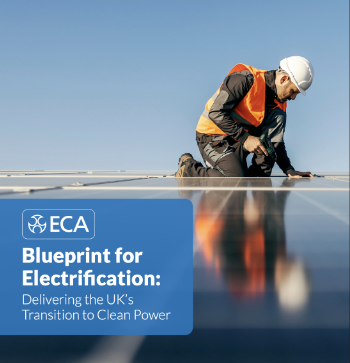Simple payback for energy savings
According to Approved document L, Conservation of Fuel and Power, Volume 2: Buildings other than dwellings, 2021 edition incorporating 2023 amendments, the term 'simple payback' refers to:
The amount of time it will take to recover an initial investment through energy savings, calculated by dividing the marginal additional cost of implementing an energy efficiency measure by the value of the annual energy savings achieved by that measure taking no account of VAT.
When making this calculation, the following guidance should be used:
- The marginal additional cost is the additional cost (materials and labour) of incorporating, for example, additional insulation – not the whole cost of the work.
- The cost of implementing the measure should be based on prices current at the date when the application is made to the building control body and be confirmed in a report signed by a suitably qualified person.
- The annual energy savings should be estimated using the National Calculation Methodology Modelling Guide.
- The energy prices that are current when the application is made to the building control body should be used when evaluating energy savings. Current prices are given on the BEIS website, at: https://www.gov.uk/government/collections/quarterly-energy-prices.
Typically, an initial investment, in for example the achievement of U-values, will be considered economically feasilble if the simple payback period is not greater than 15 years. However, other periods may be considered economically feasible for other elements.
[edit] Related articles on Designing Buildings
Featured articles and news
The Architectural Technology Awards
The AT Awards 2025 are open for entries!
ECA Blueprint for Electrification
The 'mosaic of interconnected challenges' and how to deliver the UK’s Transition to Clean Power.
Grenfell Tower Principal Contractor Award notice
Tower repair and maintenance contractor announced as demolition contractor.
Passivhaus social homes benefit from heat pump service
Sixteen new homes designed and built to achieve Passivhaus constructed in Dumfries & Galloway.
CABE Publishes Results of 2025 Building Control Survey
Concern over lack of understanding of how roles have changed since the introduction of the BSA 2022.
British Architectural Sculpture 1851-1951
A rich heritage of decorative and figurative sculpture. Book review.
A programme to tackle the lack of diversity.
Independent Building Control review panel
Five members of the newly established, Grenfell Tower Inquiry recommended, panel appointed.
Welsh Recharging Electrical Skills Charter progresses
ECA progressing on the ‘asks’ of the Recharging Electrical Skills Charter at the Senedd in Wales.
A brief history from 1890s to 2020s.
CIOB and CORBON combine forces
To elevate professional standards in Nigeria’s construction industry.
Amendment to the GB Energy Bill welcomed by ECA
Move prevents nationally-owned energy company from investing in solar panels produced by modern slavery.
Gregor Harvie argues that AI is state-sanctioned theft of IP.
Heat pumps, vehicle chargers and heating appliances must be sold with smart functionality.
Experimental AI housing target help for councils
Experimental AI could help councils meet housing targets by digitising records.
New-style degrees set for reformed ARB accreditation
Following the ARB Tomorrow's Architects competency outcomes for Architects.
BSRIA Occupant Wellbeing survey BOW
Occupant satisfaction and wellbeing tool inc. physical environment, indoor facilities, functionality and accessibility.























